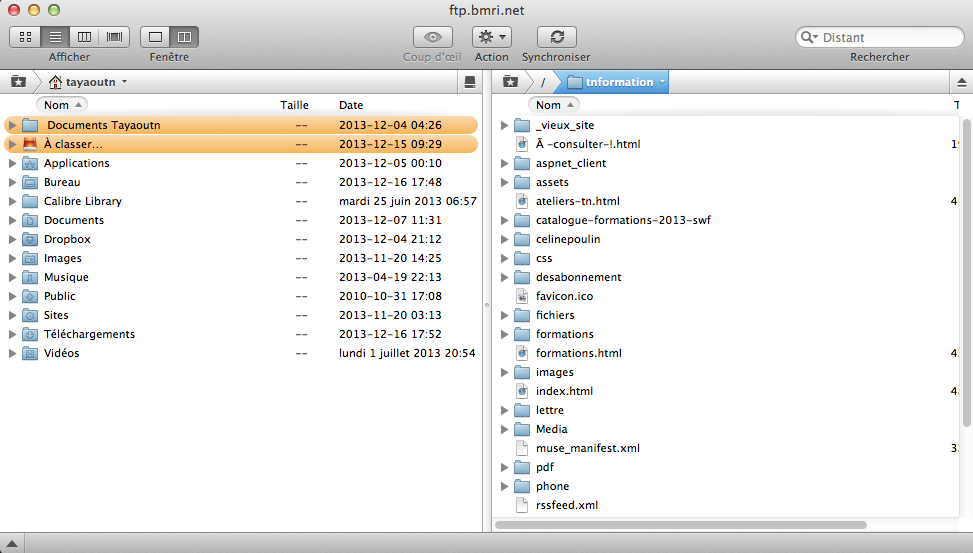

Transmit moved beyond just being an FTP client some time ago by adding WebDAV and Amazon S3 support. With the convenience of the cloud and a lower cost, the migration of FTP tasks to the cloud is a reasonable trend.Īpplications like Google Drive and Dropbox are known for being alternatives to FTP servers. In FTP communications, there are two endpoints: an FTP server and a client computer. Though FTP servers have long been the enterprise choice for file transfer, today’s cloud solutions tend to offer more advanced features with increasing security awareness. Both offer online file transfer and sharing features, but how do they differ? Issue With the advancement of cloud computing, cloud service providers offer a worthy alternative to traditional FTP servers.
#Transmit ftp server password
Password authentication, SSH key authentication (SFTP), MFA, multiple user and admin roles Default id key files located in /.ssh Transmit will attempt to use any id keys (idrsa, iddsa, ided25519, and idecdsa) in your /.ssh directory.

#Transmit ftp server full
On-demand reports, audit log archive, inactive user suspensionĭedicated network firewalls, vulnerability scanning, full backup or offsite replication, high availability serversĮmail notifications, flexible directory structure, limited folder views per user, file retention controls, granular user permissionsĭesignations for SSAE-18 SOC1, SOC2, or SOC1 GDPR PCI-DS HIPAAįTP, FTPS, or SFTP file sharing links data-in-transit encryption branded web UI (HTTPS) dedicated IP and custom SSL certificate Passwords defined in Transmit’s connection settings The next authentication method that Transmit will try is a password specified in the Server settings. The following features are typical for modern FTP server solutions: Level In the realm of cybersecurity concerns, some FTPs allow for anonymous connection while others require a username, password, or MFA.
How different FTP servers differ often is the security of accessing the FTP. With two devices known as FTP clients connected to the internet and a specific FTP server, the server enables the uploading and downloading of data between the two parties. The above graphic shows how FTP servers act as an intermediary between devices. įTP servers go beyond other servers in facilitating file transfers over the internet. Learn more about the range of server types, functions, and purposes in our Guide to Servers. This article looks at what a traditional FTP server is, how it works, examples of modern FTP services, and more. Looking at the existing market, physical FTP servers typically have the fullest set of features needed for enterprises. On-premises FTP servers will remain a component for large organizations managing complex and mission-critical file transfer requirements – but the trend towards cloud-based FTP servers is clear. In either environment, FTP servers are the storage mechanisms that provide the secure transfer of files of varying weights and file formats. While FTP servers traditionally were a physical unit in an organization’s back end, the adoption of SaaS technology brings those capabilities to the cloud. Learn More.Ī file transfer protocol (FTP) server is an intermediary for transferring files between computers on a network. We may make money when you click on links to our partners. So now that you know why you may need FTP, let's take a look at Transmit, a long-running FTP application built from the ground up for the Mac.ServerWatch content and product recommendations are editorially independent. You can also use FTP to share files across multiple servers. If you use Google Drive, Dropbox, Amazon S3, or Microsoft OneDrive, you are essentially transferring files to and from a server.Īnd that's where FTP has new-found relevance: with it you can quickly share files between your computer and one of the myriad "cloud" based servers. Nowadays, the term "cloud" has all but replaced the term "server" when people talk about sharing files over the network. Well before the World Wide Web exploded on the scene in the mid 90's, FTP was the way to move files between your local computer and a server (another networked computer located somewhere else). But the reality is simple: FTP is the method used for transferring files from one computer to another. Mention the term "FTP" (File Transfer Protocol) at any mixed gathering, and chances are pretty good that you'll get a few puzzled looks.


 0 kommentar(er)
0 kommentar(er)
